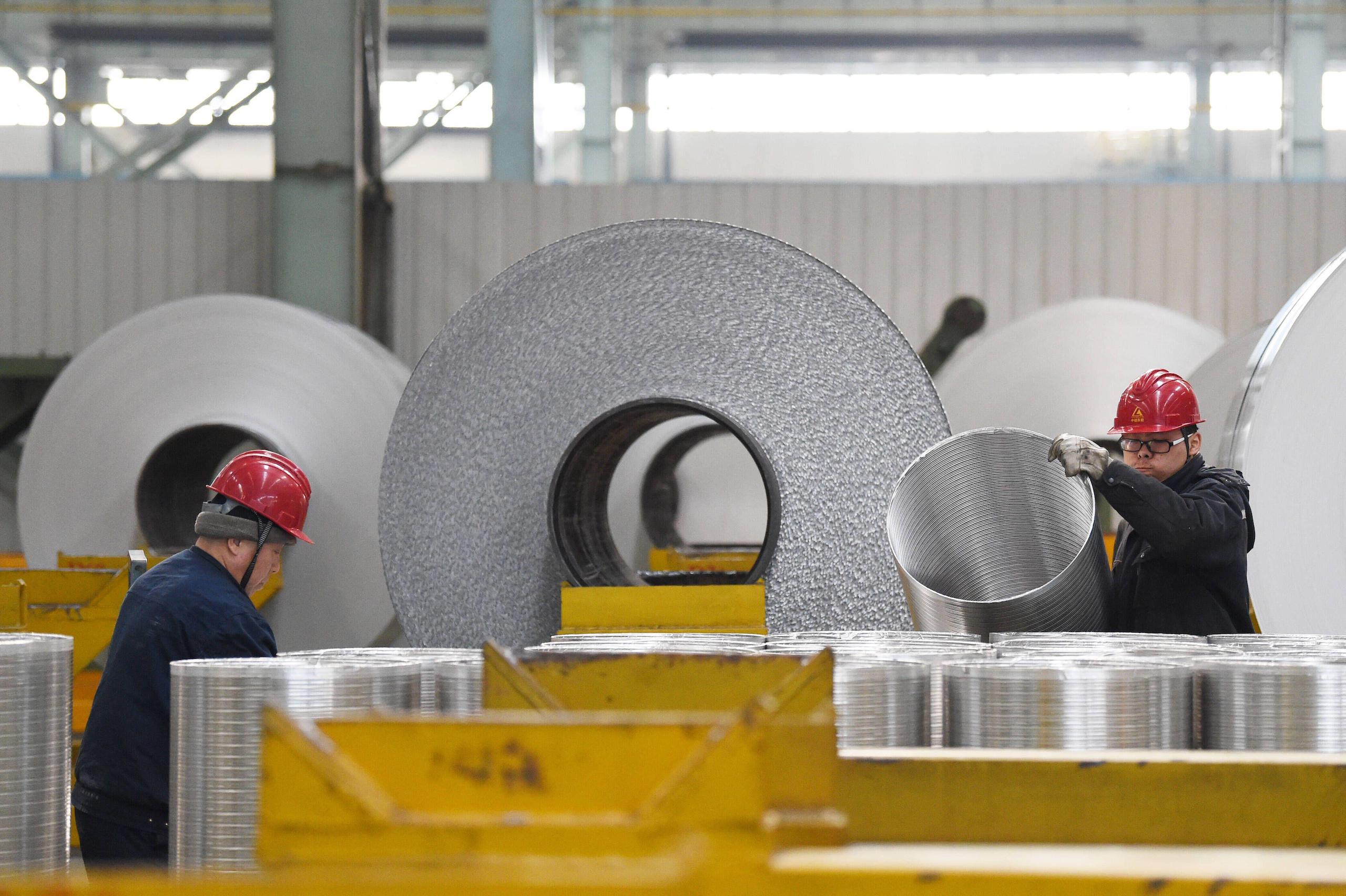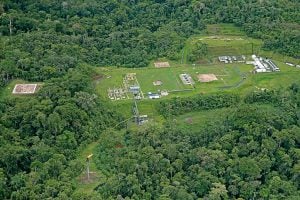This year has already been a big one for sustainability disclosures in China.
On 1 May, new guidelines came into effect for firms listed on any of mainland China’s big three stock exchanges in Beijing, Shanghai and Shenzhen. What this means is that many more Chinese companies will have to publish 2025 sustainability reports by April 2026. To be precise, 457 companies will need to, and they were responsible for two-thirds of national emissions in 2023.
The guidelines list 21 topics to cover under the categories environment, society and governance (ESG). The first topic is “responding to climate change”. Guo Peiyuan, chair of SynTao Green Finance, tells Dialogue Earth that this position reflects the importance of climate change in sustainability disclosures and is similar to approaches taken overseas.
Companies around the world are increasingly considering the impacts of climate change on their future operations and disclosing their own environmental and social impacts.
One of the most consequential disclosure bodies is the International Sustainability Standards Board (ISSB), which has a disclosure framework for sustainability (IFRS S1), and another dedicated to climate change (IFRS S2).
Both of these evolved from a disclosure framework by the since-disbanded Task Force on Climate-Related Financial Disclosures (TCFD).
The ISSB focuses on the same four pillars used by the TCFD: governance, strategy, risk management, and metrics and targets.
Contemporary sustainability frameworks usually include climate requirements, along with other ESG topics. But climate-specific frameworks remain in use in many jurisdictions. For example, the US Securities and Exchange Commission’s Final Climate Disclosure Rules.
China accounts for a third of the world’s greenhouse gas emissions. Much of its emissions arise from manufacturing for export, and those firms have always been a focus for emissions-reduction efforts. The firms that will be mandated to make disclosures under the guidelines produced an estimated 8.5 billion tonnes of CO2 in 2023 (67.5% of China’s total), according to Bloomberg Terminal data analysed by Dialogue Earth.
This means moves by Chinese regulators could have a greater impact than similar actions by regulators elsewhere.
Mandatory disclosures
As mentioned, the first batch of 457 firms to be covered by the guidelines must make disclosures by 2026. This includes companies listed on Shanghai’s 180 or Star 50 stock exchange indices, Shenzhen’s 100 and ChiNext indices, and any firm listed simultaneously in mainland China and elsewhere.
These companies are usually bigger firms that play leading roles in their sectors. And despite accounting for less than a tenth of all A-listed firms – meaning those that trade in Chinese yuan on Chinese stock exchanges such as Shenzhen’s and Shanghai’s – they represent more than half of their total value.
In terms of sectors, IT and industrial firms are well-represented, followed by “materials”, healthcare and finance. (The materials sector includes chemicals, construction materials, glass, metals, and mining.) Though only 14 energy firms are covered, their scope 1, 2 and 3 emissions total 4.91 billion tonnes, which is more than half of the 457 companies’ total emissions.
Scope 1 refers to an organisation’s direct emissions from its operations. For example, leaks of methane from oil extraction.
Scope 2 covers indirect emissions from an organisation’s energy use, such as from a power plant supplying a paper mill with electricity and heating.
Scope 3 are indirect emissions that occur along the value chain of an organisation and are not owned or controlled by it. These can include the manufacture and transportation of products. This scope usually represents the largest share of an organisation’s emissions.
The guidelines follow the ISSB standard closely, requiring companies to disclose climate governance, strategy, risks and opportunities, and indices and targets. They must reveal their scope 1 and 2 emissions and are encouraged to disclose scope 3 emissions. Firms using carbon credits or carbon trading must also make associated disclosures. And all companies have to reveal their energy transition plans, measures taken in response to climate risks and opportunities, and their progress on those.
Of the 457 firms, 57% are already disclosing scope 1 or scope 2 emissions in either their annual, sustainability or ESG reports, or elsewhere. Less than 14%, however, are making scope 3 disclosures. Of the 14 energy firms, nine are disclosing scope 1 and 2 emissions, but none are disclosing scope 3 emissions.
The significance of the guidelines
Dialogue Earth spoke to a number of experts who suggested the guidelines are important in three ways.
Firstly, they set a new precedent. Sabrina Zhang used to be S&P Global’s APAC Head of ESG Integration, and China country head for CDP. Now founder and CEO of the fintech and consultancy firm Smartesg, she tells Dialogue Earth that the significance of the guidelines lies more in their publication than their content – they are another milestone for corporate climate governance in China.
Zhang considers the development of regulations to be a gradual process. The requirements are not as strict as might have been hoped, perhaps to avoid increasing costs for firms, she says. And she notes the lack of a requirement to make scope 3 disclosures and the need to refine some details. However, it is still “a policy weathervane, and will put companies not yet taking action under pressure”.
Secondly, the guidelines will increase the overall rate of disclosures within China. According to emissions rankings of listed firms, the percentage of A-listed firms disclosing emissions and related data rose from 7.84% in 2021 to 33.90% in 2023. This is still lower than international norms. For example, 65% of firms in Singapore and 45% in the US make these disclosures.
Zhang thinks China’s comparatively low rate reflects a lack of motivations among A-listed firms:
“For example, disclosures for S&P Corporate Sustainability Assessment and CDP are complex, with over 200 questions to be answered and potential language barriers. But a lot of Chinese firms still do it proactively, because disclosures and ratings earn access to certain financial products or purchase orders. Firms which perform well could be included in certain indices or preferred by purchasers, which means more access to low-cost financing and more revenue.”
However, this proactivity is happening mainly in Chinese companies that service international markets. Within China, the market-based incentives are still at an early stage of development.
The guidelines could provide the necessary motivation. According to both Sabrina Zhang and Guo Peiyuan, once firms become aware of competitors and supply-chain partners following scope 1 and 2 disclosure requirements, they will begin preparations to do the same.
Finally, the guidelines provide a single, standardised disclosure framework, which will improve data quality. Guo points out that while some firms already publish sustainability or ESG reports, they might not include full information: “For example, disclosures might not be made for the full range of the company’s operations, or data might not be comparable, with different units used, etc.”
The consensus among experts is that the single framework provided by these guidelines will make data comparable, enabling investors to make better decisions and the public to exercise oversight more easily.
From disclosures to action
People in the field say disclosure is just the first step in a cycle, followed by rating, investment, improvement, and then back to disclosure. Rating agencies and investors will put pressure on companies to improve their climate performance in response to feedback. For example, Climate Action 100+ is a global investor-led initiative that engages with big emitters, advocating for reductions in their emissions. The companies regularly disclose their emissions data and changes to their climate governance, which empowers potential investors.
As a comment piece in the Southern Weekly pointed out, globally speaking, climate is the ESG topic most likely to allow for cycles of improvement. One important reason is that the energy transition is already underway and irreversible, with renewable energy now undeniably a potentially profitable investment. That gives some firms motivation to act. Climate data is also more obtainable than that of other ESG topics, while the associated rating models and value assessments are also more advanced.
Guo thinks this disclosure should lead to better management – it is not a case of writing the report and leaving it there. A company should look for the management issues this process might reveal. “Once they’re making disclosures, they’ll find there’s work to do every year, to ensure the next set of figures are improved.”
Not just listed firms
According to the International Energy Agency, 48% of China’s emissions come from the electricity sector, 36% from industry, 8% from transportation and 5% from buildings. Research from the Center on Global Energy Policy at Columbia University has found that a lot of China’s big emitters are not necessarily listed as a whole; only a selection of subsidiaries of the big five energy conglomerates are listed. The researchers therefore suggest extending disclosure requirements to cover unlisted firms.
The government has already made its stance clear: climate disclosures will start with listed firms, but not end there. On 27 May, the Ministry of Finance published a consultation draft of rules for sustainability disclosures. It included notes explaining that disclosure requirements will be expanded from listed to unlisted firms, and from large to small- and medium-sized firms. They will also shift from being qualitative and voluntary to quantitative and mandatory.
Guo says unlisted firms are already taking the issue seriously. “Although the government and exchanges aren’t requiring small- and medium-sized enterprises to make disclosures, customers and banks have their own requirements.” He admitted that smaller firms are less able to make the necessary disclosures and so will need more support.
Zhang says a series of local or industry-specific standards may appear, providing a greater level of granularity and offering guidance to any firm that wants to make better disclosures. “Also, we need to see capacity-building for all sectors to ensure firms can publish high-quality and comparable data.”









